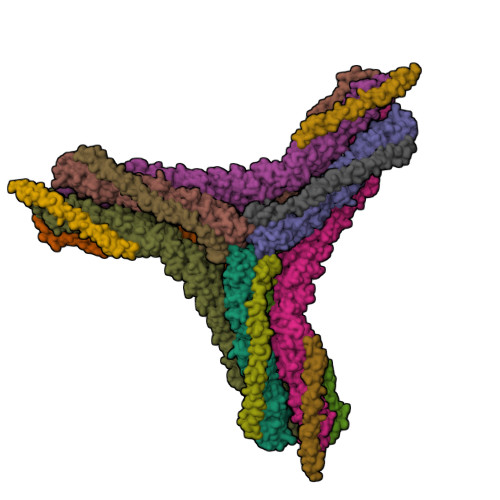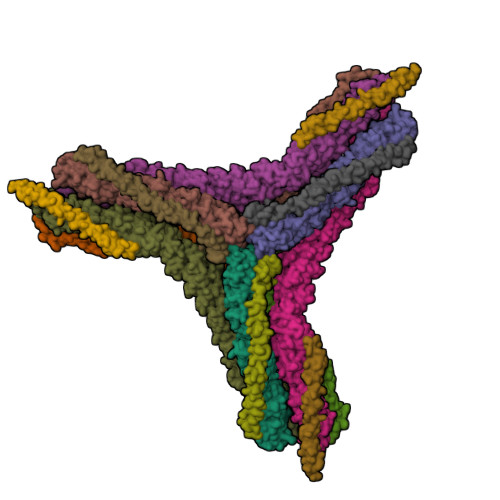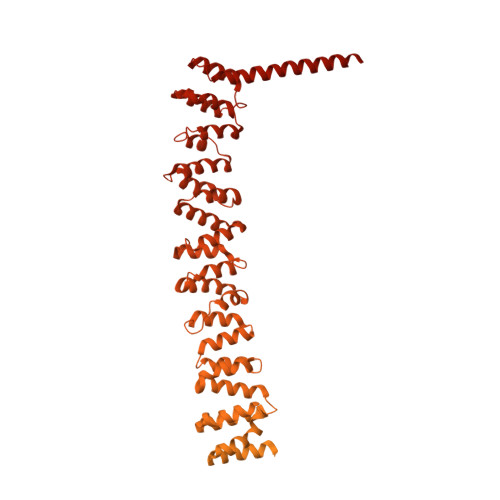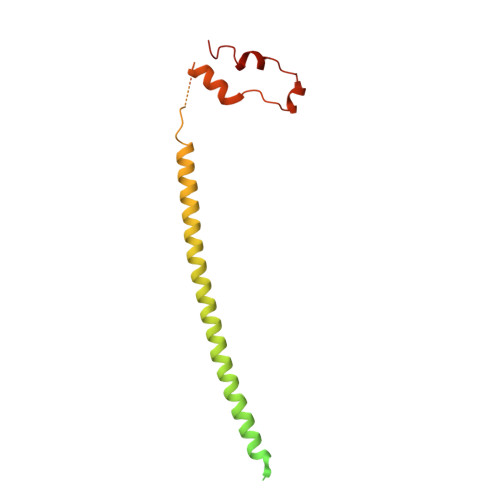Cryo-EM of multiple cage architectures reveals a universal mode of clathrin self-assembly.
Morris, K.L., Jones, J.R., Halebian, M., Wu, S., Baker, M., Armache, J.P., Avila Ibarra, A., Sessions, R.B., Cameron, A.D., Cheng, Y., Smith, C.J.(2019) Nat Struct Mol Biol 26: 890-898
- PubMed: 31582853
- DOI: https://doi.org/10.1038/s41594-019-0292-0
- Primary Citation of Related Structures:
6SCT - PubMed Abstract:
Clathrin forms diverse lattice and cage structures that change size and shape rapidly in response to the needs of eukaryotic cells during clathrin-mediated endocytosis and intracellular trafficking. We present the cryo-EM structure and molecular model of assembled porcine clathrin, providing insights into interactions that stabilize key elements of the clathrin lattice, namely, between adjacent heavy chains, at the light chain-heavy chain interface and within the trimerization domain. Furthermore, we report cryo-EM maps for five different clathrin cage architectures. Fitting structural models to three of these maps shows that their assembly requires only a limited range of triskelion leg conformations, yet inherent flexibility is required to maintain contacts. Analysis of the protein-protein interfaces shows remarkable conservation of contact sites despite architectural variation. These data reveal a universal mode of clathrin assembly that allows variable cage architecture and adaptation of coated vesicle size and shape during clathrin-mediated vesicular trafficking or endocytosis.
Organizational Affiliation:
School of Life Sciences, University of Warwick, Coventry, UK.



















